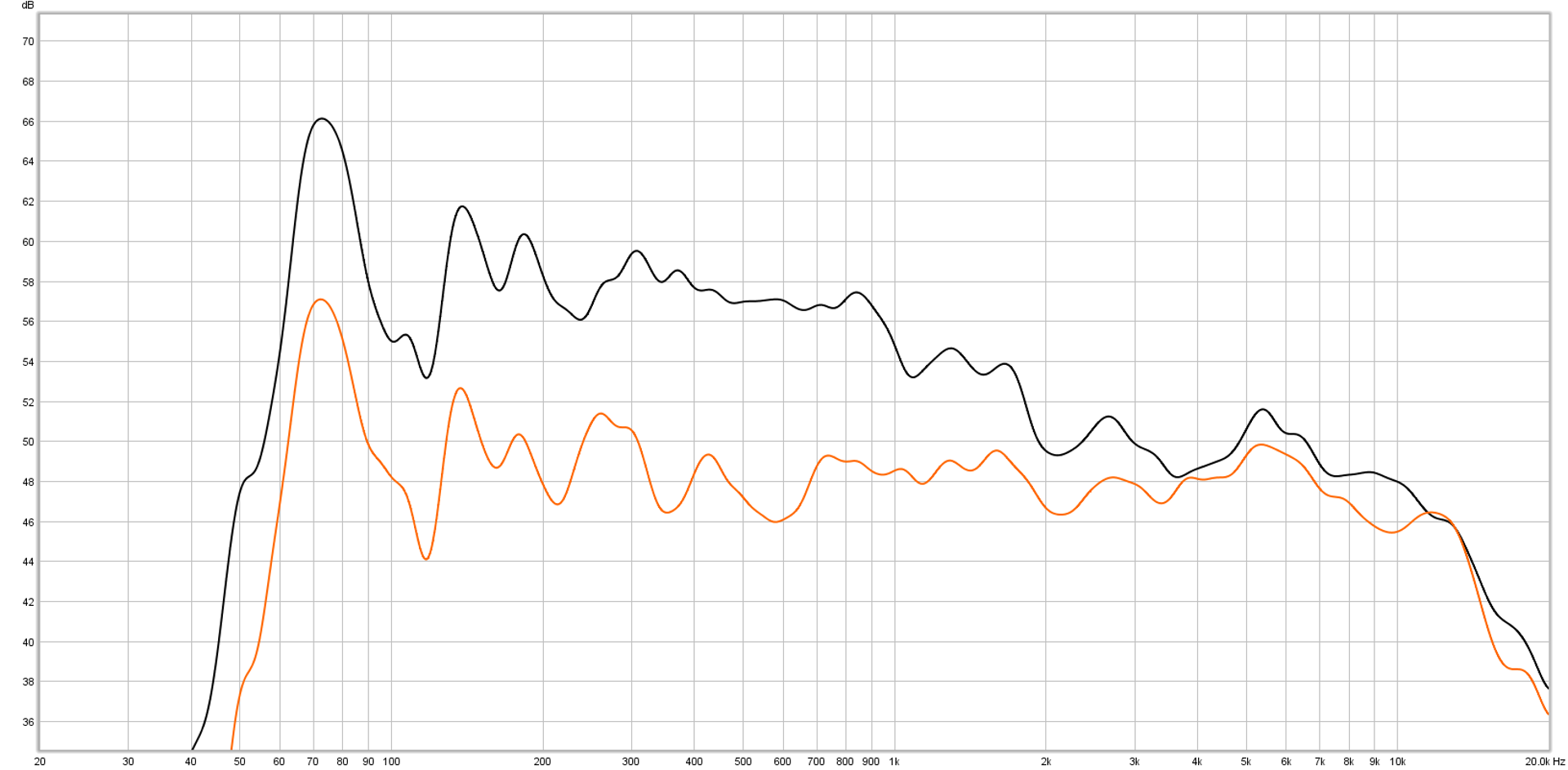A look at some system measurements and where they led me.
Please Remember:
The opinions expressed are mine only. These opinions do not necessarily reflect anybody else’s opinions. I do not own, operate, manage, or represent any band, venue, or company that I talk about, unless explicitly noted.

 Want to use this image for something else? Great! Click it for the link to a high-res or resolution-independent version.
Want to use this image for something else? Great! Click it for the link to a high-res or resolution-independent version.In the last few weeks, I’ve had the occasion to do a bit of measuring in a couple of rooms. One space was well known to me, and the other was brand new. In both cases, I found it pretty interesting to see the starting points…and where those starting points led me.
Room one is a venue I’ve spent lots of time with. It’s the location for The Intermountain Acoustic Music Association’s Local Concert Series. The black trace is the main PA (A pair of Yamaha DBR12s) with no EQ other than a high pass filter at about 50 Hz. The orange trace is where I ended up.
I’ve always felt that the space was “garbled,” with a tendency for me to go on deep digging expeditions in the lower mids with both channel and bus equalization. The black trace shows why. Relatively speaking, there’s a tremendous buildup of energy below 2 kHz, which leads to a sort of muddy roar. It’s especially rough when the monitors reflect off the back wall…yeowch!
I fixed the LF tilt with a couple of opposed shelving filters at about 2 kHz. A wide-ish peaking filter helped me tame a small hill at 1.5 kHz. I left the 75 Hz peak in place because some percussive work was being done with an acoustic guitar, and the small hill at around 5 kHz gave me a bit of bite that I liked.
(As a sidenote, I don’t really trust my wireless playback system to give me accuracy above 10 kHz, so I didn’t try to get linearity above that area.)
The tuning I put in place helped a lot. To be quite fair, neither act at this particular gig was a complex mix. Even so, I felt that I didn’t have to work as hard to get clear tonality during the show.
Room Two was the new place, a recently completed performance space in downtown Salt Lake where Samba Fogo was presenting a new work.
I think – thought I’m not sure – that the PA in this room is a QSC Wideline. The default system tuning in the room had an emphasis on the material at and below 1 kHz, but it’s not as sloped as the first example. I was surprised that it wasn’t a flatter trace at the get-go, but it was hardly a disaster.
Again, a couple of shelving filters going in opposite directions helped to even things out. I was more aggressive with the top end in this room for the system tuning shown, but during tech rehearsals and show runs I ended up backing off. I didn’t try to fill in the valleys at 400 Hz and 1 kHz, because I was pretty certain that I’d have an overabundance of material there in any case.
As I’ve opined before, tuning an array system at the guest-operator level is easily done by viewing the array as one large source. I wasn’t there to pick away at individual boxes or bandpasses, but to deal with the whole. As such, a couple of filters in the right places made my job much easier.

